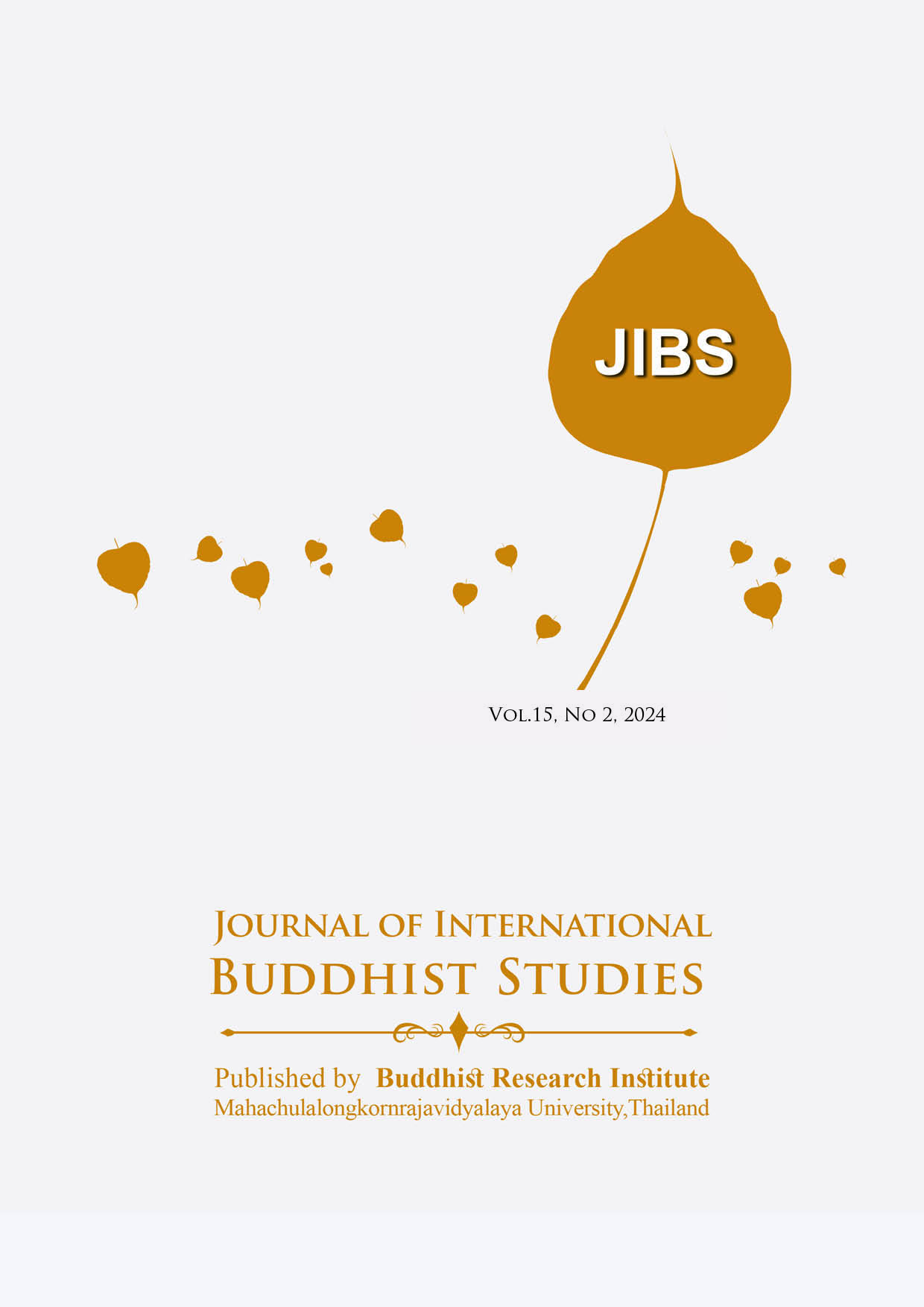Dissent and Deviance in Buddhist Monastics: Non-Conformity in the Age of the Buddha
Keywords:
Dissent, non-conformity, Chabbaggiyā, Devadatta, Ghoṣitārāma VihāraAbstract
Religious dissent and non-conformity are well embedded in the broader canvas of Indic religions. In a larger perspective, religious dissent was against certain established practices and beliefs of the religion. Deviances in religious practices broke the established procedures to benefit the self and others. Both had an emphatic impact in the social and spiritual domain as an influence and phenomenon. Buddhism has also faced dissent, deviance, and non-conformity since its origin. The incidents of Chabbaggiyā Bhikkhus, the Kosāmbī dispute, and the episode of Devadatta are some of the significant events that gave the nascent religion a shock but also the strength to plug the loopholes for the future. The majority of these deviances in the period of the Buddha were related to social and material milieus and resolved by the Saṅgha either accommodating the views of the doers or introducing prohibitionary rules by considering them as rule breakers. The non-conformity raised by Devadatta was termed as his ambition, and his demands are related to the functional aspects of the Saṅgha. However, the Buddha did not endorse his view; instead, he made it optional. The Buddha as a paramount authority was able to see dissents or deviance in a holistic perspective. The paper will examine the nature, procedure, and ramifications of dissents and deviances in the age of the Buddha.
References
Ammerman, Nancy T. “Schism: An Overview.” In Encyclopedia of Religion, edited by Mircea Eliade. New York: Macmillan, 1987.
Analayo, Bhikkhu. “The Buddha’s Pre-awakening Practices and Their Mindful Transformation.” Mindfulness 12 (2021): 1892–1899. https://doi.org/10.1007/512671-021-01646-0.
Anguttara Nikāya. Translated by F.L. Woodward. The Book of Gradual Sayings. 5 vols. New Delhi: Motilal Banarasidas, 2006 (reprint).
Bareau, André. “Devadatta and the First Buddhist Schism.” Buddhist Studies Review 14 (1997): 19–37.
Barua, B.M. The Ājīvikas. Calcutta: University of Calcutta, 1920.
Dhammapadaṭṭhakathā of Buddhaghosa. Edited by H.C. Norman. 4 vols. London: Pali Text Society, 1906–1914.
Dīgha Nikāya. Translated by T.W. Rhys Davids and J.E. Carpenter. 3 vols. Delhi: Motilal Banarasidas, 2010 (reprint).
Durkheim, Émile. The Elementary Forms of Religious Life. New York: The Free Press, 1965.
Dutt, Nalinaksh. Buddhist Sects in India. New Delhi: Motilal Banarasidas, 1998.
Hirakawa, Akira. Studies in Primitive Buddhism. Tokyo: Shunjusha, 1964.
Hocart, A.M. “Buddha and Devadatta.” Indian Antiquary 52 (1923): 267-272.
Jacobi, Herman. Jain Sutras. 2 vols. New Delhi: Motilal Banarasidas, 2015.
Jātaka. Translated by E.B. Cowell. The Jatakas or the Stories of the Buddha’s Former Births. 2 vols. New Delhi: Motilal Banarasidas, 1993 (reprint).
Lamotte, Étienne. History of Indian Buddhism: From the Origins to Śaka Era. Louvain-La-Neuve: Université Catholique de Louvain, Institut Orientaliste, 1988.
_____. “Did the Buddha Insult Devadatta?” Buddhist Studies Review 14 (1997): 3-18.
Malalasekera, G.P. Dictionary of Pali Proper Names. 2 vols. New Delhi: Motilal Banarasidas, 2007 (reprint).
Mahāvastu. Translated by J. J. Jones. 2 vols. London: Pali Text Society, 1956.
Majjhima Nikāya. Translated by Bhikkhu Bodhi. The Middle Length Discourses of the Buddha: A New Translation of Majjhima Nikāya. Boston: Shambhala, 2009.
Matsunami, Yoshihiro. “Conflict within the Development of Buddhism.” Japanese Journal of Religious Studies 6, no. 1/2 (1979): 329-345.
Mitra, Kalipada. “Cross-Cousin Relation Between Buddha and Devadatta.” Indian Antiquary LIII (1924): 125-128.
Nakamura, Hajime. The Formation of Primitive Buddhism. Tokyo: Shunjusha, 1974.
Orru, Marco, and Amy Wang. “Durkheim, Religion, and Buddhism.” Journal for the Scientific Study of Religion 31 (1992): 47-61.
Prasad, Nanda Kishore. Studies in Buddhist and Jain Monasticism. Vaishali: Research Institute of Prakrit, Jainology, and Ahimsa, 1972.
Ray, Reginald. Buddhist Saints in India: A Study in Buddhist Values and Orientations. New York: Oxford University Press, 1994.
Rockhill, W. W. The Life of the Buddha, and the Early History of His Order. Berkeley: Kegan Paul and Company, 1884.
Samantapāsādikā of Buddhaghosa. Edited by J. Takakusu. 2 vols. London: Pali Text Society, 1924.
Saṁyutta Nikāya. Translated by F. L. Woodward. The Book of Kindred Sayings. 5 vols. Delhi: Motilal Banarasidas, 2004 (reprint).
Singh, Anand. “Giriyaka Hilltop Buddhist Monastic Complex (Rajgir): Understanding Antiquarian Remains and Physical Spaces.” Ancient Asia 12 (2021): 1-19. https://doi.org/10.5334/aa.251.
_____. “Identification of Dakkhinagiri and Monastic Cave of Bhikkhu Purāṇa at Rājagīra: Archaeology Substantiating Buddhist Scriptures.” The Indian International Journal of Buddhist Studies 23 (2023): 23-49.
_____. “Wandering Almsmen and Their Saṅgha.” Proceedings of the Indian History Congress 67 (2007): 98-105.
Thapar, Romila. “Dissent and Protest in Early Indian Tradition.” Diogenes 29 (1981): 31-54.
Tilakaratne, Asanga. “Dissent in Buddhism: Its Doctrinal (Dhamma) and Monastic Disciplinary Perspectives.” In Buddhist Ethics: Collected Papers of Asanga Tilakaratne, 63-78. Malabe, Sri Lanka: Sarasavi Publishers (Pvt) Ltd, 2020.
_____. “Personality Differences of Arahants and the Origins of Theravāda: A Study of Two Great Elders of the Theravāda Tradition: Mahākassapa and Ānanda.” In Dhamma-Vinaya: Essays in Honour of Venerable Professor Dhammavihari (Jotiya Dhirasekera), edited by Asanga Tilakaratne et al., 229-257. Colombo: Sri Lanka Association for Buddhist Studies, 2005.
Tinti, Paola G. “Did Hsuan Tsang Meet the Followers of Devadatta?” Buddhist Studies Review 14 (1997): 39-47.
Udāna. Translated by F. L. Woodward. The Minor Anthologies of the Pali Canon. Part II: Udāna: Verses of Uplift, and Itivuttaka: As It Was Said. London: Pali Text Society, 1935.
Vinaya Piṭaka. Translated by T. W. Rhys Davids and Hermann Oldenberg. Vinaya Texts. 3 vols. Delhi: Motilal Banarasidas, 1996 (reprint).
Viśuddhimagga of Buddhaghosa. Translated by Bhikkhu Ñāṇamoli. The Path of Purification (Visuddhimagga). Colombo: Buddhist Publication Society, 2010.
Watters, Thomas. On Yuan Chwang’s Travels in India (AD 629–645). Delhi: Low Price Publication, 2000 (reprint).
Wilson, John. “The Sociology of Schism.” In A Sociological Year Book of Religion in Britain, vol. 4, 1-21. London: SLM Press, 1971.
Downloads
Published
How to Cite
Issue
Section
License
Copyright (c) 2024 Journal of International Buddhist Studies

This work is licensed under a Creative Commons Attribution 4.0 International License.







